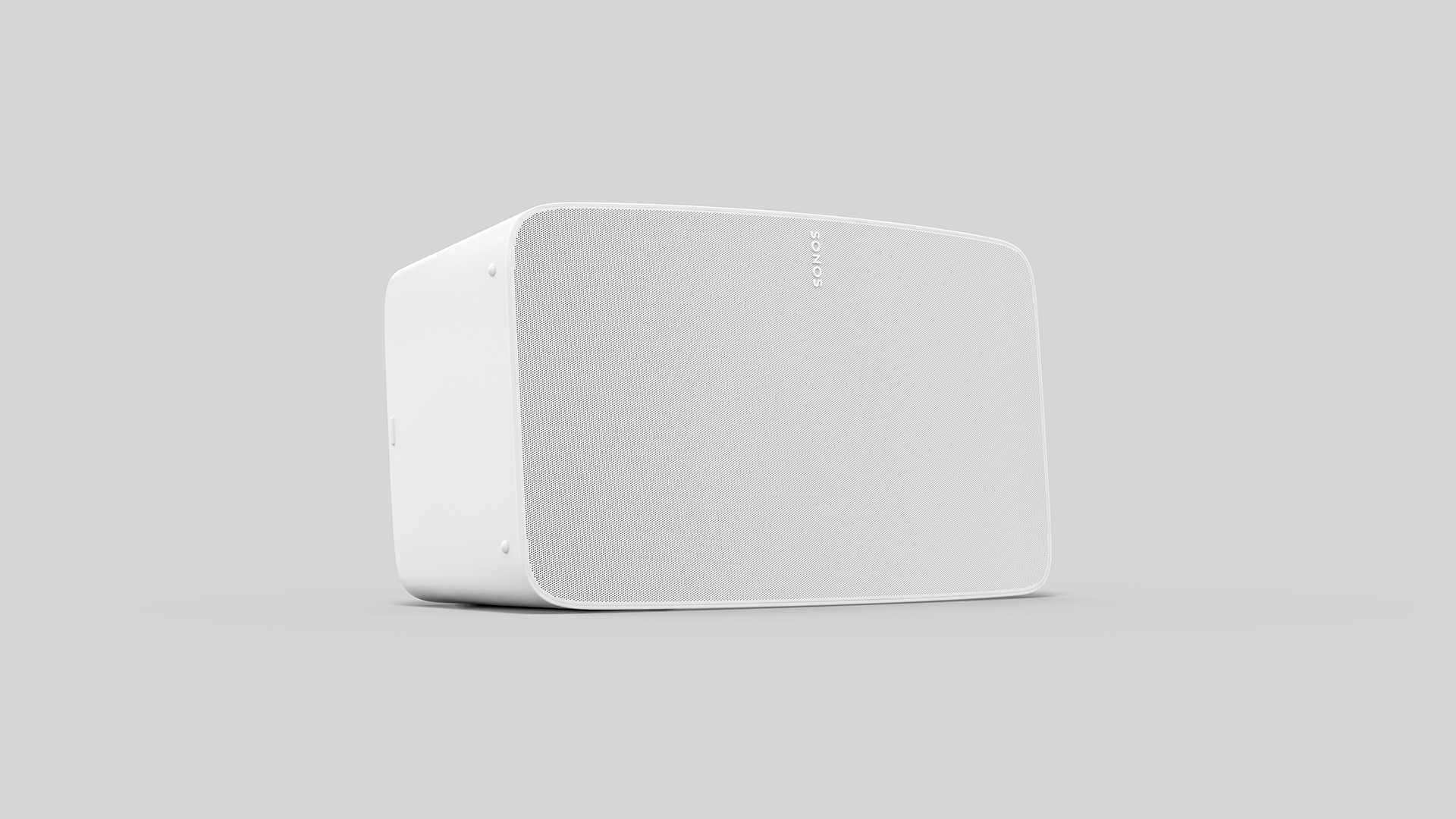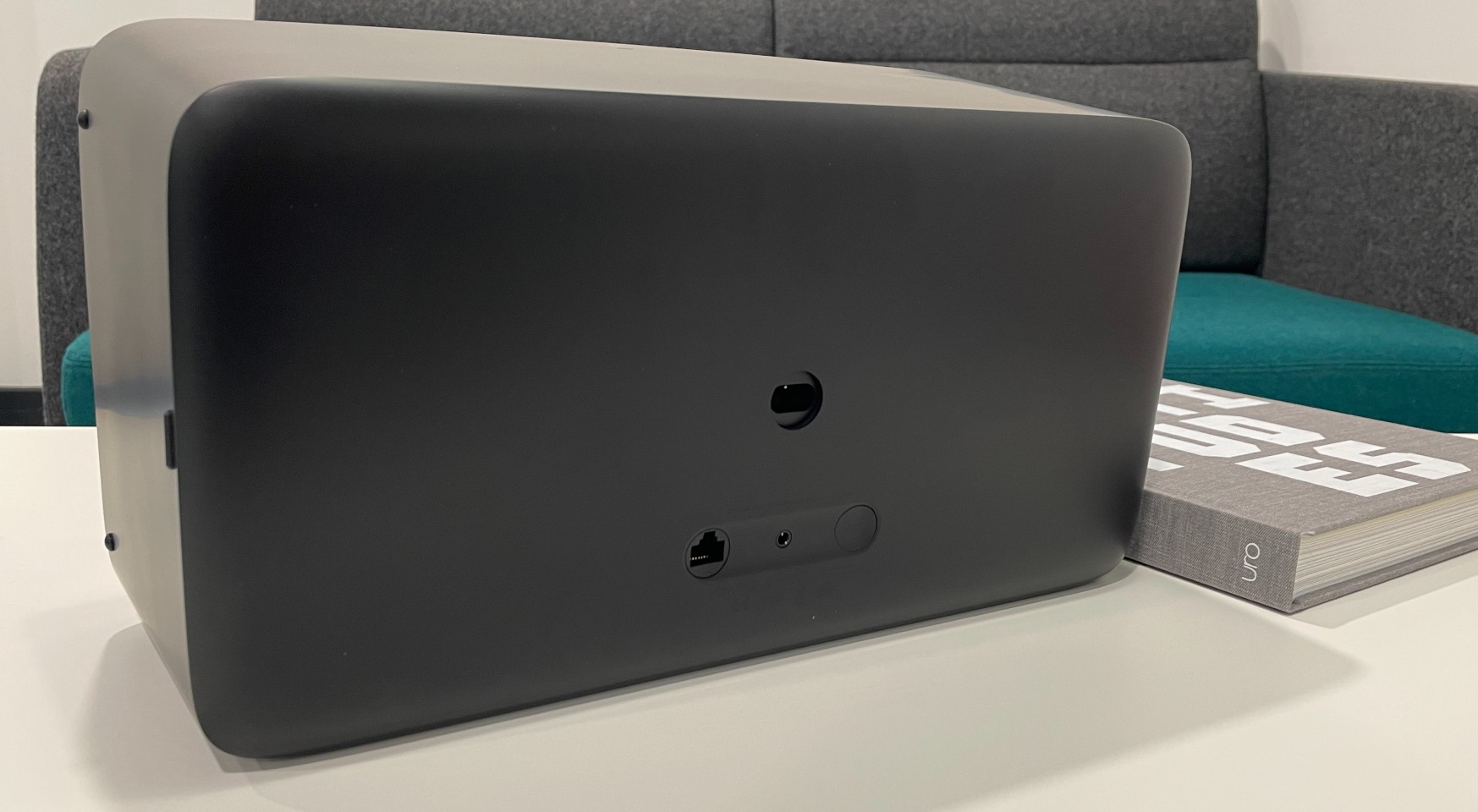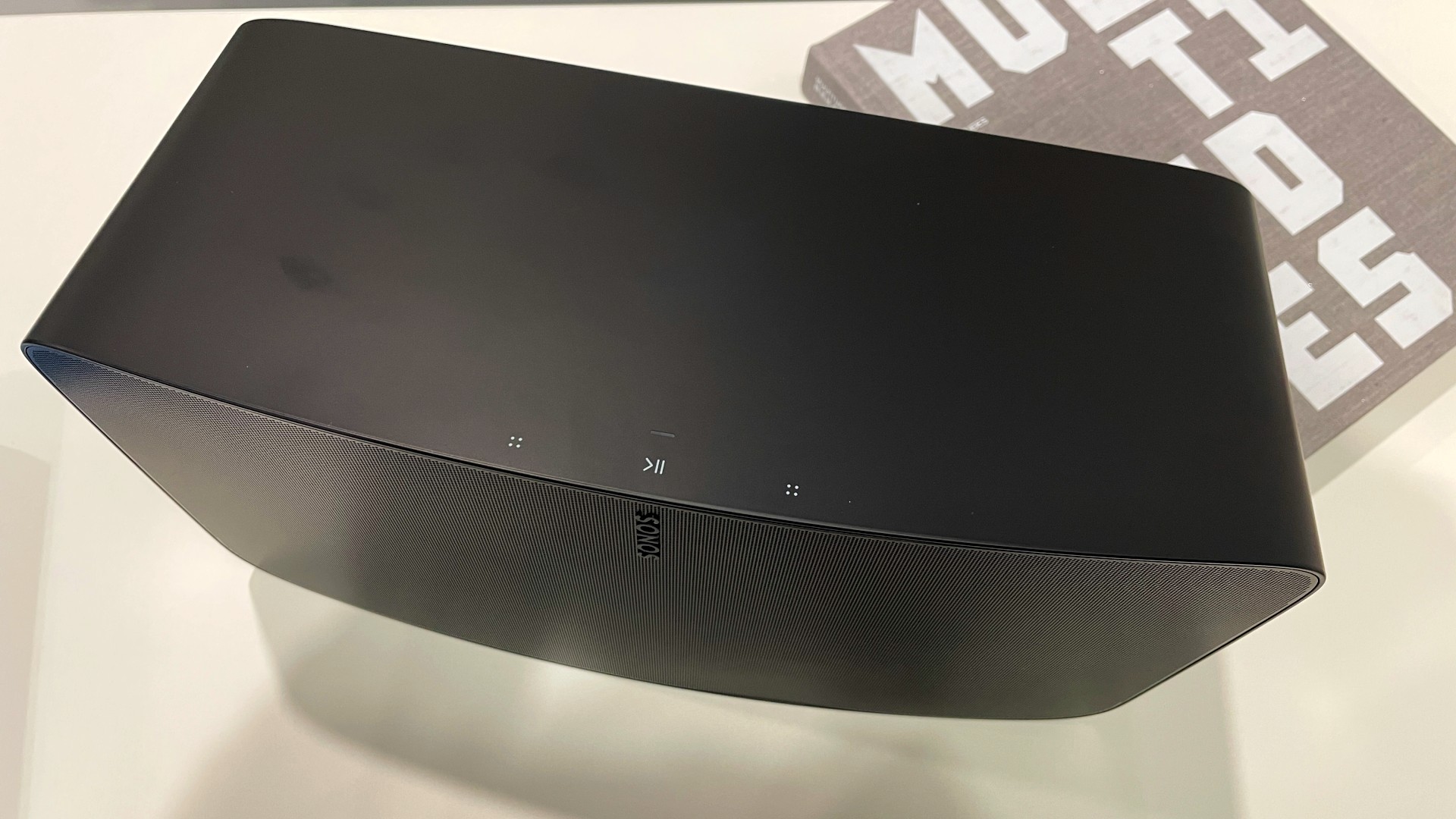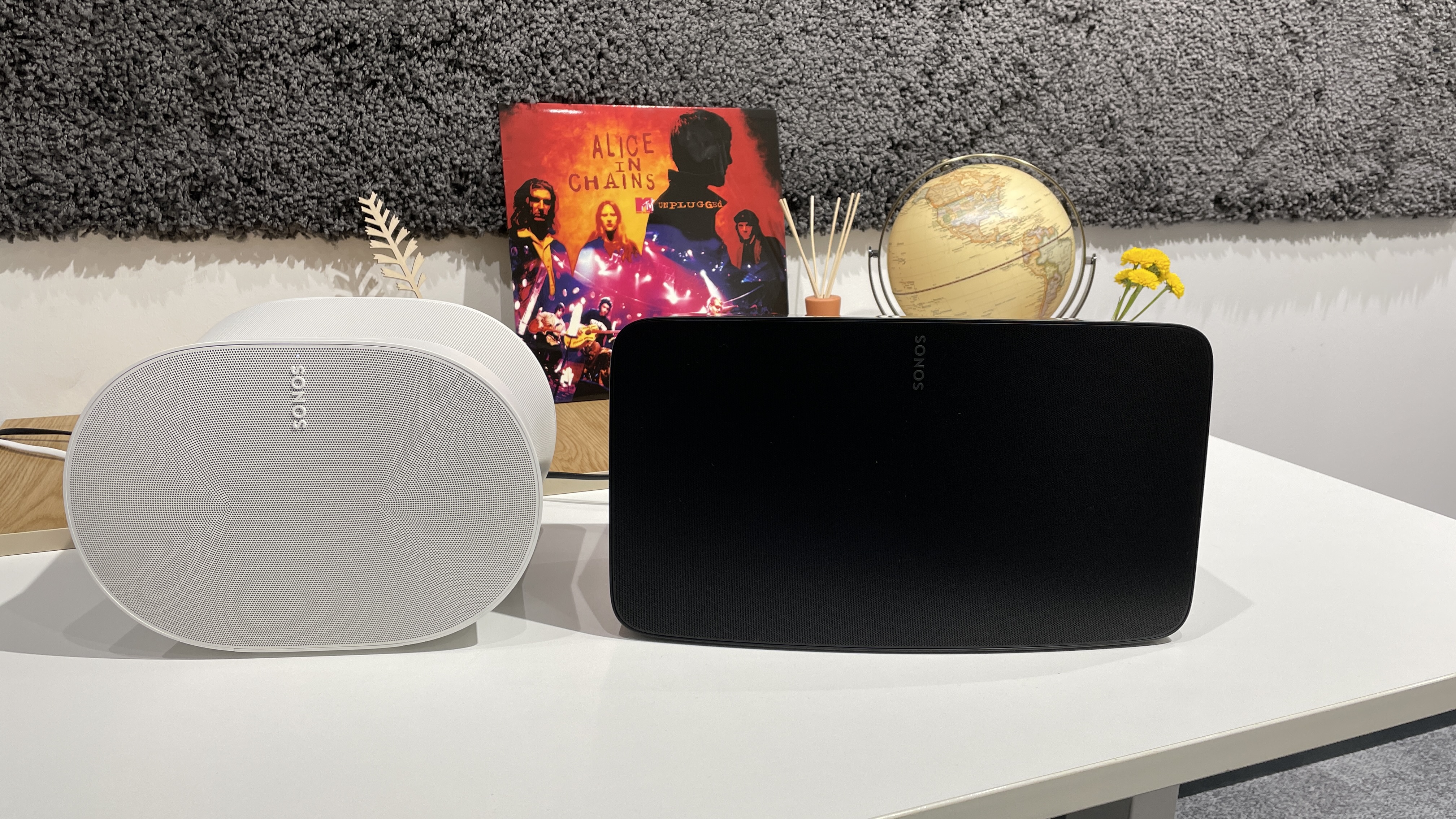What Hi-Fi? Verdict
Bold, expansive sound and great multi-room potential – but just short of being the complete article
Pros
- +
Big, room-filling sound
- +
Well made and finished
- +
Can form a stereo pair
Cons
- -
A bit too bassy for its own good
- -
Slightly rounded-off treble
- -
No Bluetooth
Why you can trust What Hi-Fi?
In the beginning was the Sonos S5, which became the Sonos Play:5. Then came the Play:5 Gen 2 – and now here’s the Sonos Five. Could you tell one from another in a line-up? Almost certainly not.
The Five is certainly the biggest and probably the most powerful speaker in the entire Sonos line-up (it’s hard to tell for sure, because Sonos remains cautious in the extreme about publishing details like ‘power output’).
It’s updated on the inside, slightly smoothed off on the outside. It’s part of what is widely acknowledged to be the best multi-room ecosystem around. But is it any good?
Price
It's certainly still the priciest speaker in Sonos's line-up, as even though the brand new spatial audio-toting Era 300 has emerged as the jewel in Sonos's crown, it costs less than the Five at £449 / $449 / AU$749.
The Sonos Five costs £499 in the United Kingdom. Or, at least, it does if you shop directly with Sonos – there are quite a few retailers who will charge you a little less. In the United States it sells for around $549 (again, that’s in Sonos-land), while Australian customers should expect to part with AU$799.
You hardly need us to tell you there’s a fair bit of choice when it comes to wireless speakers at this sort of money. Heck, some of them even have Bluetooth connectivity.
But no matter how well-specified the alternatives to the Five, do any of them have membership of the most stable, most simple, most straightforward multi-room ecosystem on the planet? Didn’t think so.
The latest hi-fi, home cinema and tech news, reviews, buying advice and deals, direct to your inbox.
Design

Straightforward in the manner of a brick, the Sonos Five hasn’t so much been ‘designed’ as ‘hewn’. Broadly speaking, it’s the same as the products that preceded it: a sealed, slightly trapezoid cabinet that is just a little larger at the (metal grille-covered) business end than it is at the rear.
The Five is available in matte black or matte white finishes, and is – like every Sonos product – built and finished to a high standard. It’s designed to sit in a ‘landscape’ arrangement if being used as a discrete speaker, but can be put into ‘portrait’ orientation if you fancy using a couple of Fives as a stereo pair.
Features

On the inside, the Five is the same as it ever was – or, rather, as its predecessors. Six blocks of Class D amplification power six individual speaker drivers: three mid/bass units (facing more-or-less forwards), two tweeters angled quite strongly outwards, and a third tweeter facing dead ahead. This is the arrangement Sonos long ago hit upon as providing an acceptably wide spread of sound.
Physical connectivity is kept at the rear of the cabinet. As well as mains power, there’s an Ethernet socket and a 3.5mm analogue input. Wireless connectivity, meanwhile, runs to Apple AirPlay 2 – you weren’t expecting Bluetooth, were you? This is Sonos we’re dealing with here, after all…
The new Era 300 (and smaller, cheaper Era 100) has rectified this, finally adding Bluetooth alongside the usual streaming options. It also swaps out the 3.5mm input for a USB-C line-in, so it's up to you which input you prefer for a wired connection to a source.
There are a few physical controls on the top of the cabinet – little capacitive symbols cover off ‘play/pause’ and ‘volume up/down’. Swiping across rather than just touching lets you skip forwards or backwards through your audio selection.

Inputs 3.5mm analogue line in, Ethernet, Apple AirPlay 2
Features TruePlay room calibration (for iOS), Stereo pairing
Bluetooth? No
App Yes (iOS and Android)
Dimensions (hwd) 20.3 x 36.4 x 15.4cm
Weight 6.36kg
Finishes x2 (black, white)
It’s just as easy to control the Five via the exemplary Sonos app, of course – after all, it’s the stability, simplicity and friendliness of this app that’s a big part of Sonos’ burgeoning ubiquity. As well as the broad strokes of playback, the app features EQ adjustment, allows you to trim stereo balance (if you’ve a pair of Fives), integrate your speaker into your wider Sonos multi-channel and/or multi-room system, and – if you’re an iOS user – run the TruePlay calibration feature. Admittedly it requires you to pace around your listening space waving your smartphone about, but it only needs doing once, and it’s pretty effective.
There are no integrated mics here, though, which means no voice control. Of course, if you have a mic-toting Sonos speaker as part of a wider system (for instance, the older Sonos One, Era 100 or newer Era 300) it’s possible to get the Five to do what you want just by raising your voice.
A significant feature over the model the Five replaces is the upgraded, higher-performing processor. Sonos rumours are always flying, and the one about support for high-resolution audio is one of the most common – so why don’t we join in? Could this new, improved processor be in place to allow the Five to support hi-res audio? We’ll all just have to wait and see.
Sound

The case for TruePlay is made pretty strongly when you first unpack your Five and set some music playing. Before TruePlay has had a chance to do its thing, the sound of Moodymann’s Taken Away is altogether too bass-forward and lacking in definition. Low frequencies dominate, to the detriment of the rest of the frequency range, and bass sounds themselves are far from the most disciplined or properly defined. If you’re an Android user who fancies a piece of the Sonos Five action, you might ask an iOS-equipped friend to pop over and TruePlay your new speaker for you.
Post-TruePlay, the Five sounds altogether better balanced and organised. It’s still over-pleased with its low-frequency response, but it controls the attack and decay of bass sounds more effectively – and where there was previously a tendency to drone there’s a fair bit more detail, more texture, and greater insight into the bottom end. Bass is still over-confident, you understand, but now not fatally so.
Midrange information projects forward nicely. It’s not what you’d call ‘transparent’ but there’s more than enough information available to make a singer’s character and attitude apparent. The soundstage the Five creates is spacious enough and sufficiently well mapped to allow vocalists more than enough elbow room to express themselves without being swamped by the activity around them – but, at the same time, they’re presented as part of a coherent whole rather than sounding removed or remote.

The top of the frequency range is a little rounded off, presumably both in the name of ‘good taste’ and also to prevent treble sounds becoming hard or edgy at volume. Because, make no mistake, the Sonos Five is capable of significant volume. You’ll never be in any doubt as to where the sound is coming from, of course, because the point-source when using a single speaker is always obvious. But unless you’re listening in a very big room, or a room with very high ceilings, this speaker is more than capable of room-filling volume. And admirably, it doesn’t change its sonic characteristics when you wind it up, it simply gets louder.
It’s a reasonably dynamic device where the broad strokes of ‘quiet / LOUD / LOUDER STILL’ are concerned, too – it’s able to move through the gears without getting in any way stressed. The more subtle second-stage dynamics of harmonic variation can elude it, especially when a recording is especially dense or otherwise complex, but overall the Sonos is pretty competitive in this regard.

How does it compare with the newer Era 300 speaker? A side-by-side comparison proves instructive, as we're immediately met with the immense sense of scale from the Era speaker. Even setting spatial audio aside and sticking with stereo music, the Five can't compete with the Era when it comes to scale. However, the Five still does go a tad bit louder.
The Five's presentation sounds a touch forward and lean compared with the more expressive, mature sound we hear from the Era 300. Voices and instruments simply sound more textured and nuanced in the new Era speaker, leaving the Five trailing a little behind with more complex musical arrangements.
Verdict

If you’re already a Sonos believer, the Five is a solid speaker that is accomplished in quite a few ways. Despite the new Era 300 offering far more features and an overall more expressive, dynamic sound, the Five's bigger, louder approach will appease many (especially if you simply don't care about spatial audio at all). If you’re just looking for the best way to spend this sort of money on a wireless speaker, though, there should be other products on your shortlist too – especially if you fancy a stereo pair.
SCORES
- Sound 4
- Features 4
- Build 5
MORE:
Read our five-star review of the new Sonos Era 300
Sonos Era 300 vs Sonos Five: which high-end Sonos speaker is for you?
Also consider the KEF LSX II if you want stereo sound
These are the best wireless speakers for all budgets
What Hi-Fi?, founded in 1976, is the world's leading independent guide to buying and owning hi-fi and home entertainment products. Our comprehensive tests help you buy the very best for your money, with our advice sections giving you step-by-step information on how to get even more from your music and movies. Everything is tested by our dedicated team of in-house reviewers in our custom-built test rooms in London, Reading and Bath. Our coveted five-star rating and Awards are recognised all over the world as the ultimate seal of approval, so you can buy with absolute confidence.


